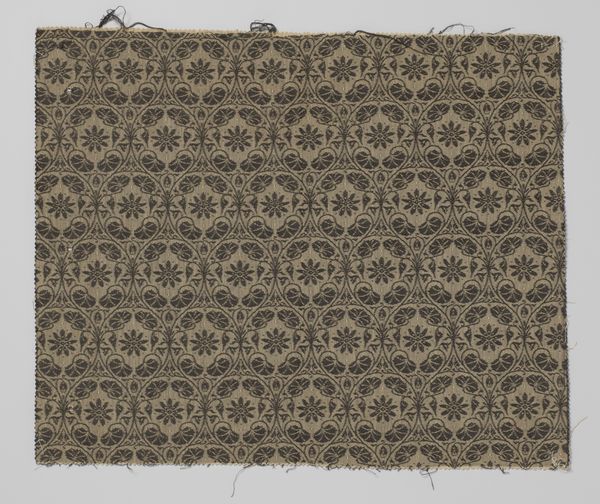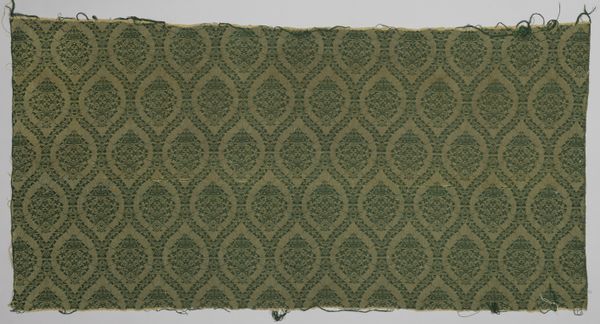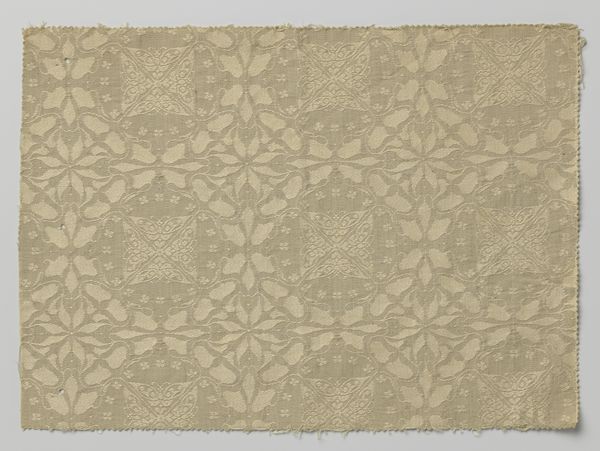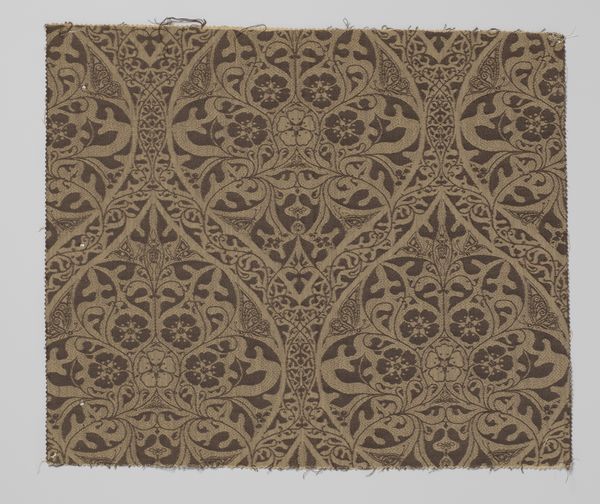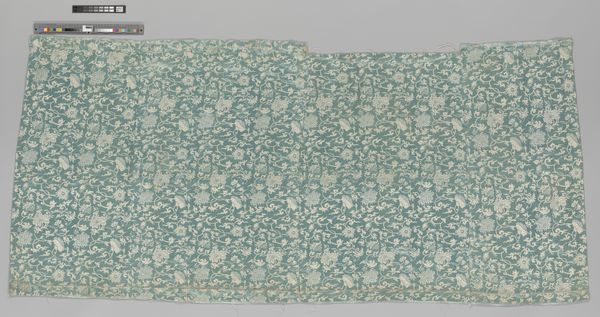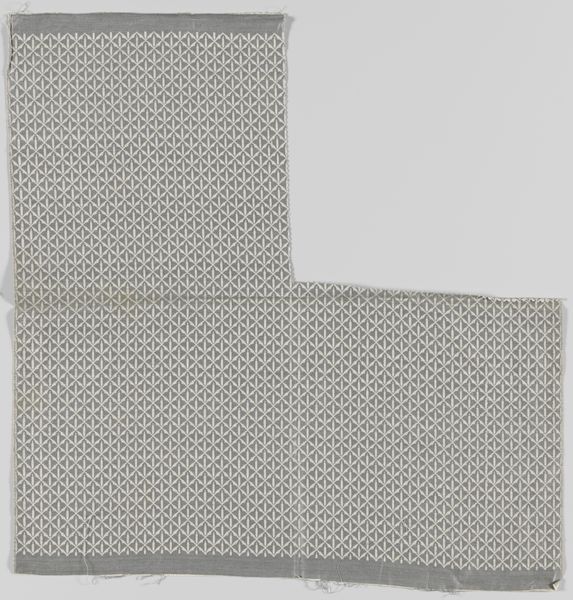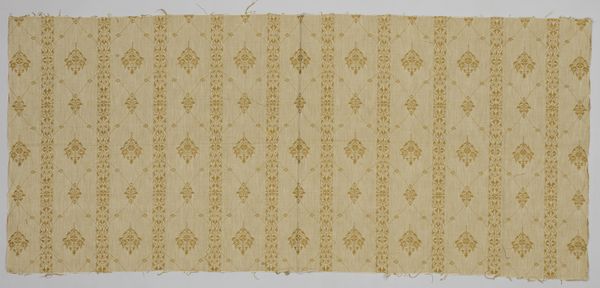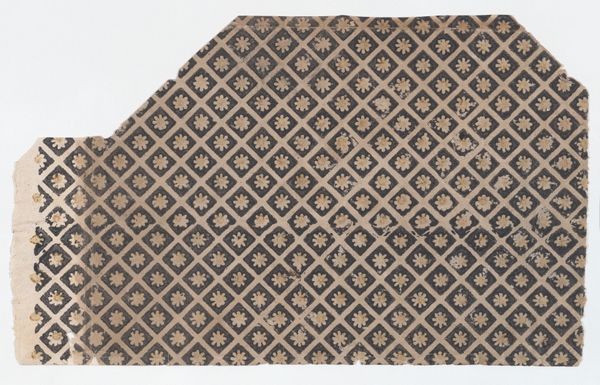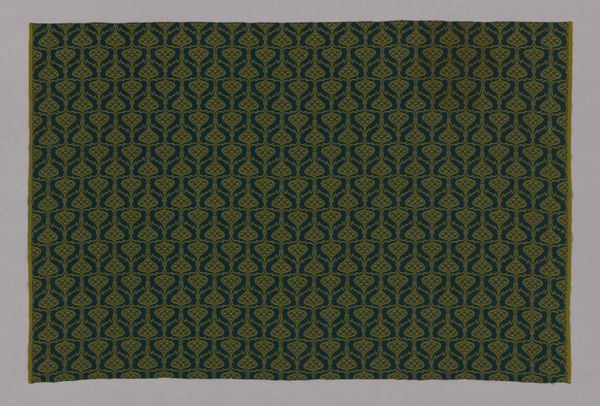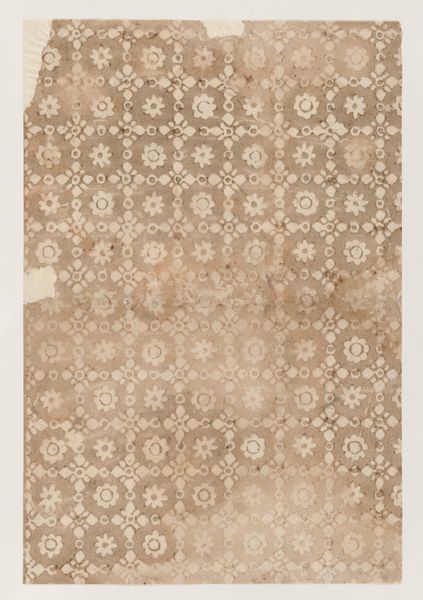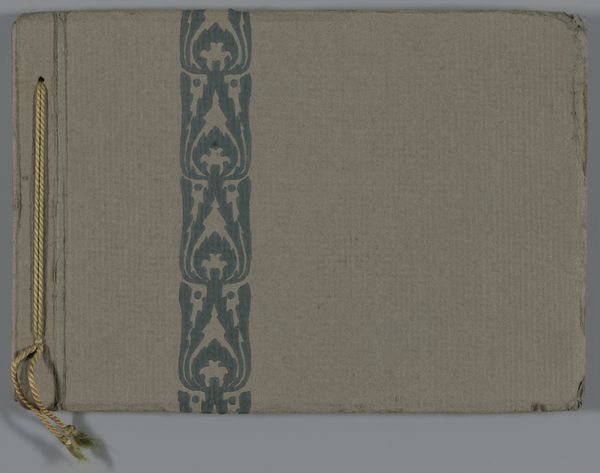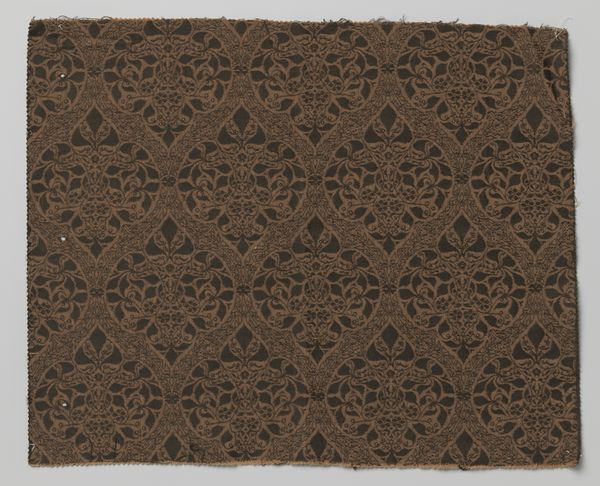
textile
#
arts-&-crafts-movement
#
textile
#
geometric
#
regular pattern
#
pattern repetition
#
decorative-art
Dimensions: length 38.0 cm, width 46.0 cm
Copyright: Rijks Museum: Open Domain
Curator: This is a fragment of upholstery fabric titled “Fragment bespanningsstof met bloem binnen spitsovalen,” by Theo Nieuwenhuis, dating from between 1900 and 1925. Editor: It's rather muted, isn’t it? An all-over design, almost oppressive in its evenness, with flowers encased within these oval shapes. Curator: Its origins lie in the Arts and Crafts movement, which advocated for handcrafted items in response to industrialization. The repeating botanical motif highlights that ideal, but let's not forget the context. Fabric like this would have been increasingly accessible to the middle classes due to machine production, democratizing design. Editor: I can see the handmade ideal struggling against the inherent artificiality of that symmetrical composition. Notice how the individual floral motifs are essentially identical, organized into a predictable grid. Curator: Indeed. However, that very repetition provided a sense of visual order and calm that appealed to many in a rapidly changing world. Imagine this fabric in a parlor, reflecting progressive values and simultaneously embracing the familiar. Editor: Visually, I’m interested in that subtle olive-green hue that dominates the fabric. It avoids stridency, doesn't it? Yet it also limits the forms, flattening any attempt at three-dimensionality. Curator: Perhaps, but I also see a certain honesty in its flatness, reflecting the textile's very nature. It avoids pretension and instead offers functional beauty meant for daily life. We might want to see what other social contexts shaped this object at the turn of the 20th century in Europe. Editor: Perhaps we're both seeing sides of the same coin here, then. A production caught between mechanization and individual design. It's fascinating how those tensions express themselves within such a simple, repeating pattern.
Comments
No comments
Be the first to comment and join the conversation on the ultimate creative platform.
